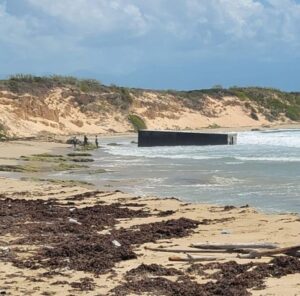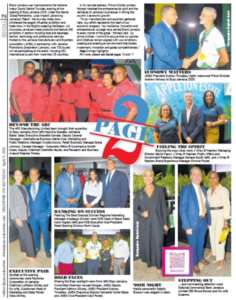Ground broken for Rare-Earth Project
KINGSTON, Jamaica – Jamaican and Japanese officials on Monday launched a pilot project designed to investigate whether rare-earth elements can be commercially extracted from the island’s bauxite waste.
Researchers with Japan’s Nippon Light Metal Company believe they have found high concentrations of rare-earth elements in the island’s red mud, a byproduct of bauxite refining into alumina, the basic material for manufacturing aluminium.
During the pilot project, researchers from the two countries will treat some 30 tons of dry red mud with acid to potentially extract some of the 17 rare-earth elements that are vital in manufacturing smartphones, plasma screens, wind turbines, satellites and numerous other high-tech products.
Hopes are soaring that the pilot project at the Jamaica Bauxite Institute’s (JBI) headquarters could result in a commercial deal to extract rare-earth oxides from the red waste stored in containment ponds around mining grounds.
Prime Minister Portia Simpson Miller said that if the joint venture proves viable, it could be among the most “significant projects ever undertaken in Jamaica.”
“This project represents the kind of industrial diversification that this country needs it if is to realise its economic potential and improve living standards for our people,” Simpson Miller told Japanese dignitaries and Jamaican officials, scientists and businessmen.
Parris Lyew-Ayee, chairman of the JBI, said he believes that that since Jamaica’s dry red mud deposits are stored in containment ponds he believes it will be simple and safe to harvest.
“There will be no mining operations and related pressures on the environment,” said Lyew-Ayee, who described the long-discussed feasibility of extracting rare-earth elements from bauxite tailings as a sort of “holy grail” on the island, where treated red mud was formerly used to make bricks for building sites.
China is now the globe’s main supplier of rare-earth elements. Worried by that dominance, manufacturers around the globe have been spurring searches for other sources that could be profitably mined.
Rare-earth elements aren’t scarce, but few places exist with enough concentrations to be profitable. They are difficult to isolate in a purified form and require advanced technology to extract.
Nippon Light Metal believes that the concentration of rare-earth elements in Jamaica’s red mud is “significantly greater” than other international red mud sites and it hopes to eventually extract 1,500 metric tons of rare-earth elements per year, said Energy Minister Phillip Paulwell.
Nippon has agreed to invest $3 million in buildings and equipment for the pilot project while also being responsible for operating costs. Any rare-earth elements extracted during this phase will be jointly owned by Jamaica and the Japanese company. Negotiations for commercialisation are expected to occur later.
Paulwell said in Parliament last month that rare-earth oxides were being traded at $3,500 per kilogramme.















